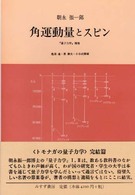Full Description
Recent research documents increasing income inequality in the United Statesin particular, a widening gap between well-educated and less-educated American workers. But income is not the sole measure of prosperity. The amount of time Americans spend in leisure is also crucial to our understanding of American well-being, changes in well-being over time, and differences in well-being among citizens. This meticulously-researched monograph examines trends in leisure inequality to present a more complete picture of prosperity in America. Using data spanning forty years and tens of thousands of survey respondents, Mark Aguiar and Erik Hurst seek to answer several key questions about leisure inequality: How much has the leisure time of the average American increased or decreased over the last several decades? What increases or decreases in leisure time are seen across groups with different levels of education, and to what extent do educational differences in employment status account for these changes?
That is, if workers with relatively little education are less likely to be employed today than twenty years ago, does that explain an increase in their leisure relative to more-educated workers? Aguiar and Hurst find that the leisure time of the average American has risen by about four hours per week since the mid-1960s. Moreover, the leisure gap between the less educated and more educated has widened, as leisure time has increased by eight hours for Americans without a high school diploma and decreased by six hours for college-educated Americans. What accounts for this puzzling divergence? Understanding the forces that drive increasing leisure inequality could have important implications for American employment policy.








